
Garima Arora’s Gaa Restaurant, in its second location, is housed in a 60-year-old traditional Thai house – a Baan Ruen Thai – transplanted to Sukhumvit on the back of a truck from Ayuthaya. Its interior is painted a neutral grey so the plateware and the dishes stand out, taking the space from artifact to atelier. From museum to modern.
The space honors heritage by pushing it forward, not by enshrining it, just as Garima does with the cuisine served at Restaurant Gaa, Bangkok.
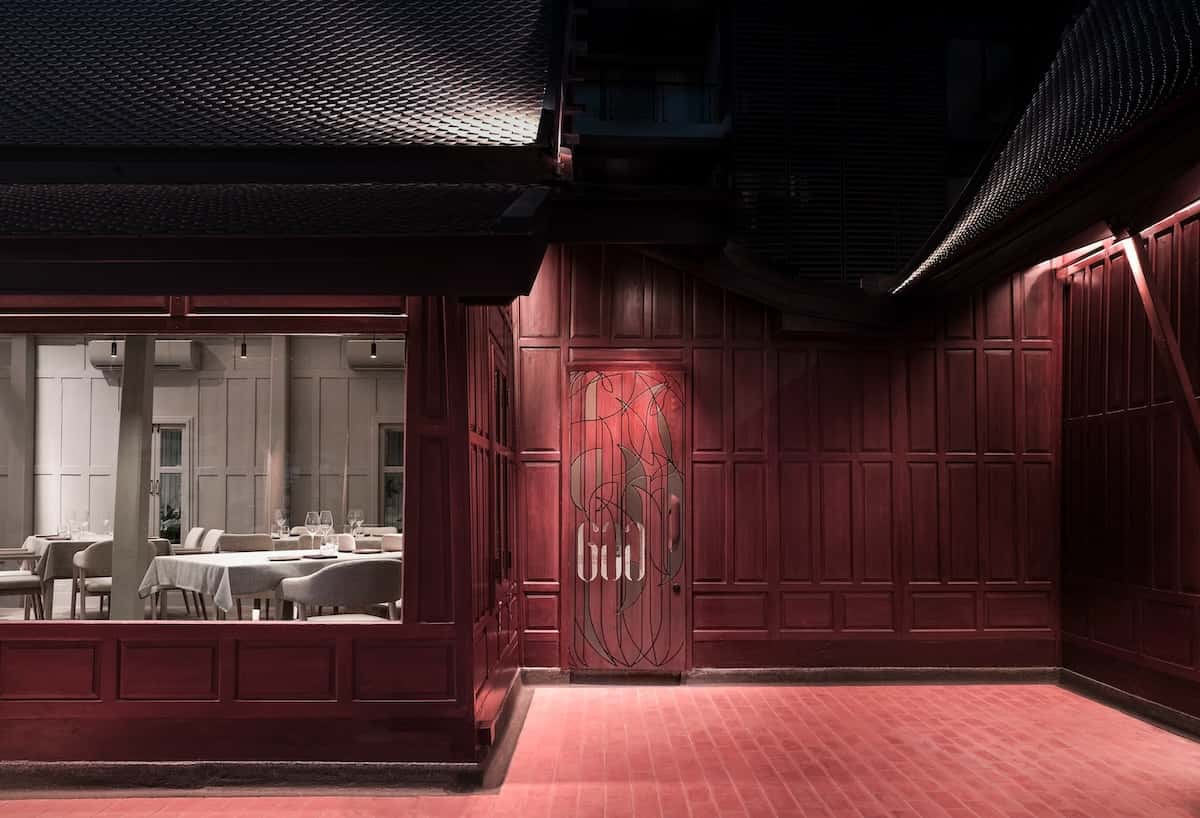
Restaurant Gaa’s Confidently Iconoclastic Set Menu
The set-menu is confidently iconoclastic, shaking off the excesses of 3 and 4-hour long, 18-course tasting menus, and refining it to a succinct expression of modern Indian cuisine that’s around ten courses and a couple of hours long.
Across those courses – each brought to the table by one of the kitchen team; beaming smiles; intoxicatingly invested in the dish they just delivered – Garima plays around too, with a cold crab ‘Summer Curry’ dish (more delicious than it sounds thanks to its interplay of temperatures, some soothingly-spicy coconut and textural shifts like crunchy okra and an apple granita), and a finale served inside and containing that most divisive of fruits, the durian.
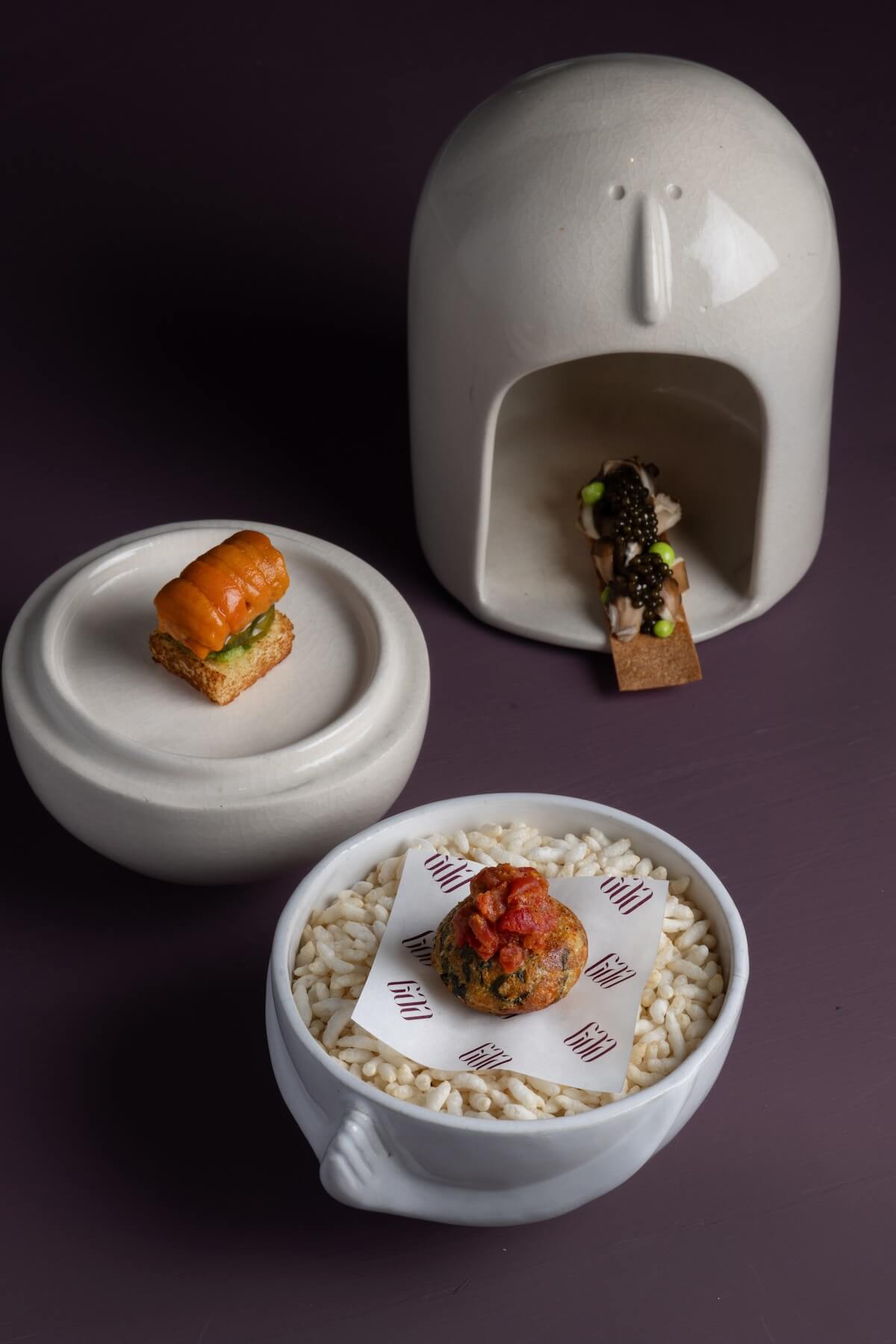
Misleadingly Modest
Downstairs, the Garden Room offers the same menu but a different seduction. Metallic curtains cocoon each table in privacy while keeping diners connected to the kitchen’s electric energy.
Upstairs, the Gaa Lounge serves as a landing pad for sundowners and hand-crafted cocktails — the signature Negroni is a silky, seductive cocktail with nostalgic notes of Thai desserts, to settle in with – a space where you might begin an evening or simply duck in for what the restaurant calls ‘a quick taste of India.’ A misleadingly modest description for unforgettable flavors.
Beside it, the long, open Baan Ruen Thai Dining Room – like the rest of the house imagined with Architectkidd, a Bangkok-based design studio – has curved ceilings and neutral walls to accentuate the action on the tables.
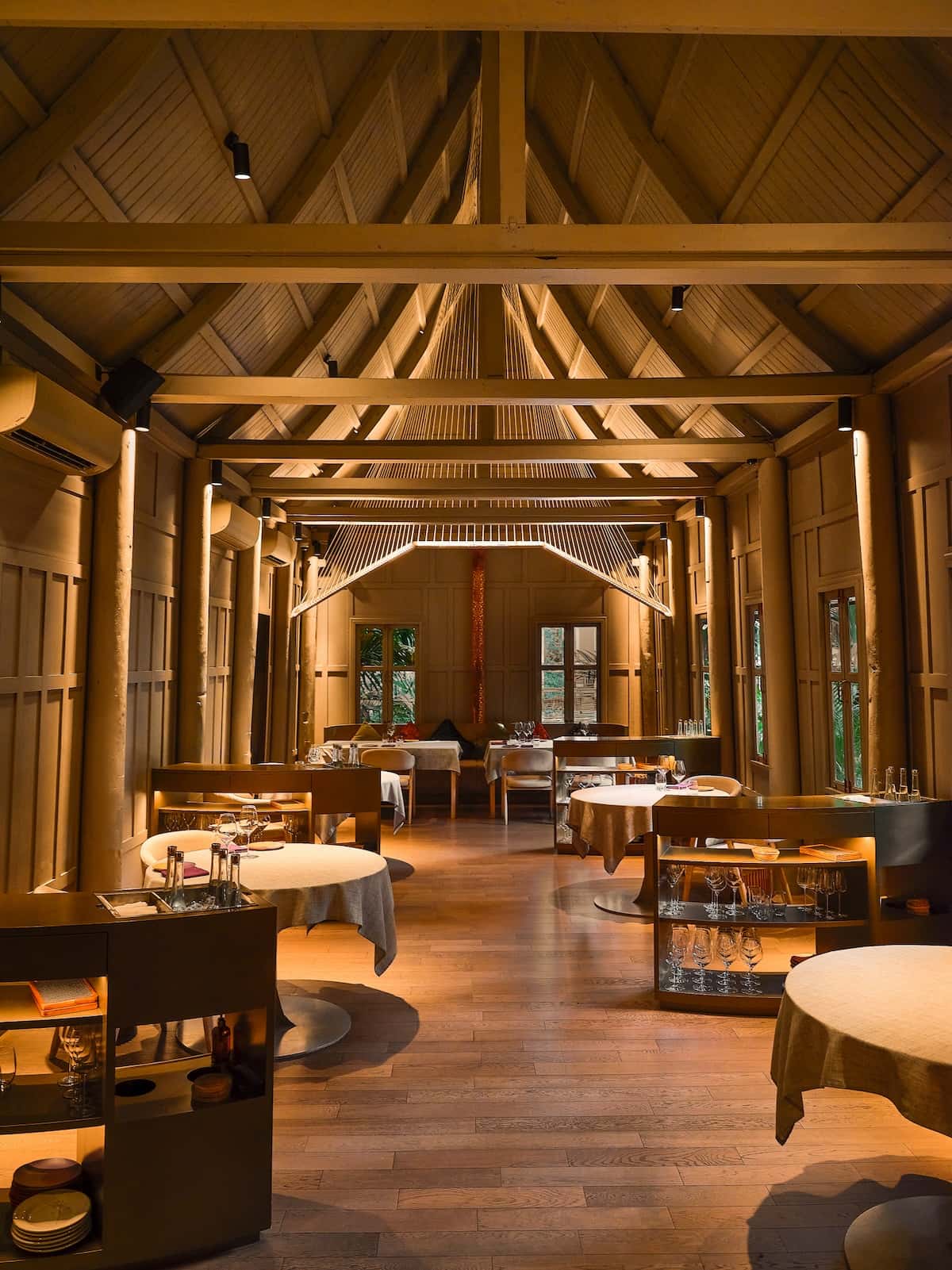
A Culinary Vocabulary Untethered By Geographic Constraints
But which India is this anyway? Not the clichéd version cut and pasted into curry house menus worldwide. Not the India that’s been reduced to butter chicken and naan bread.
This is India filtered through the journey of a Mumbai-born journalist-turned-chef of Punjabi Arora heritage who left for France in 2008 to take up her Le Cordon Bleu education, and later, for formative experiences in the kitchens of Gordon Ramsay and René Redzepi’s revolutionary Noma in Copenhagen.
By the time she opened Gaa in Bangkok in April 2017, her culinary vocabulary had evolved into something untethered from geographic constraints. This is Indian food in which tradition serves as a springboard rather than a straitjacket.
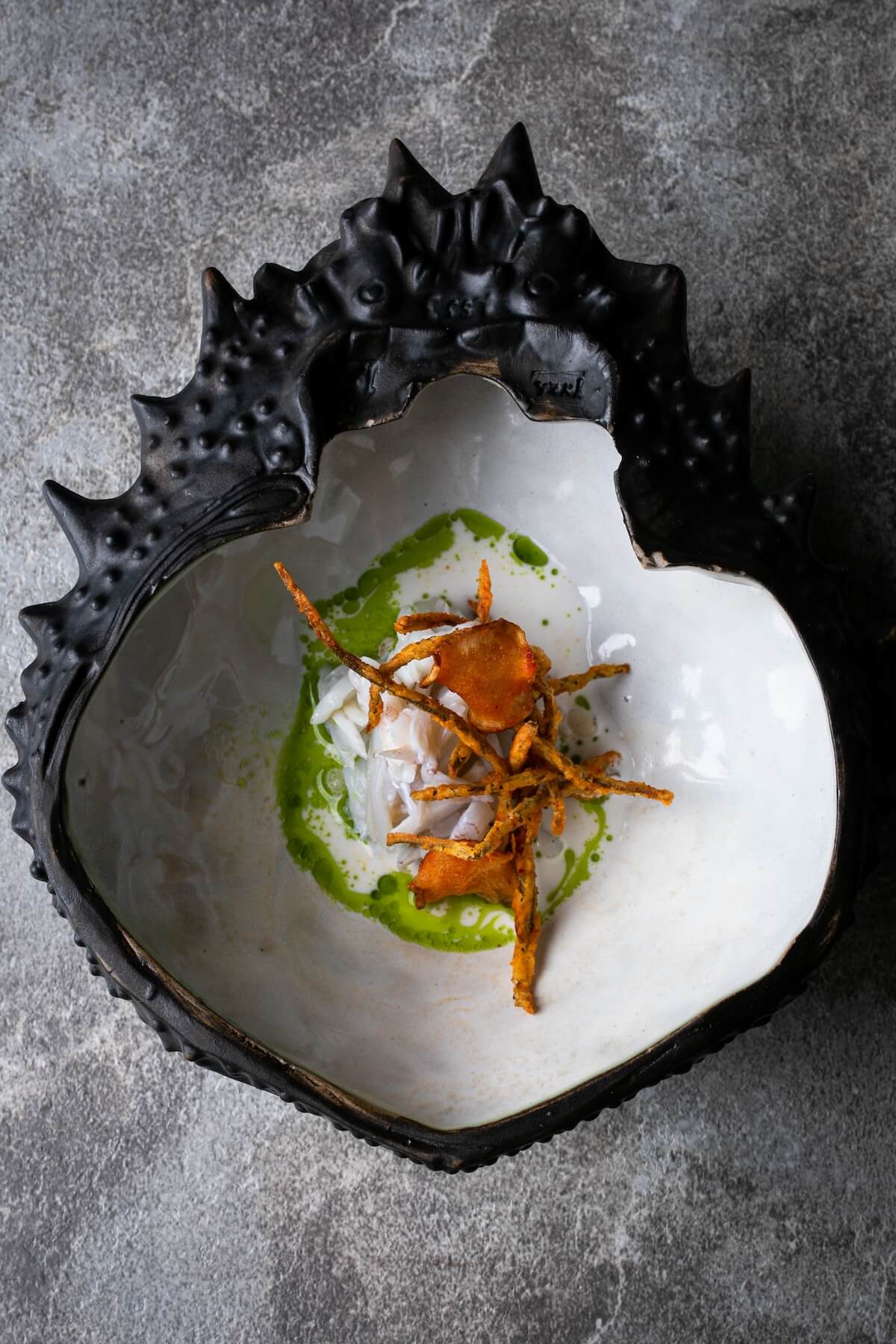
Gaa Offers An Intellectual Journey As Much As A Sensory One
While every dish is a precise, pointed statement on the plate, behind them is endless R&D. Each composition represents hours of consideration, technique, and cultural synthesis.
And for such a succinct cuisine, like the endless process of its conception, Garima has lots to say. The economy of her plating belies the expansiveness of her thinking – a deliberate tension that makes dining at Restaurant Gaa an intellectual journey as much as a sensory one. “Some dishes are born within five minutes. Some we work on for months and months, maybe sometimes even years…and they never make it to the menu,” she shakes her head.
The ones that survive this rigorous process become part of a symphony of flavors, distilled into a deceptively simple culinary expression — complexity made minimal. “I’m a very direct person. There’s no frills attached to how I conduct myself with people, my relationships, or my work. So, this approach is reflective of who I am,” she shrugs unapologetically. “I don’t think we have any other option but to be minimalistic in our approach to Indian cooking. Keeping things simple is very important to get to the fundamentals of any cuisine…”
At Restaurant Gaa, those fundamentals, she contests, should be relayed in a tasting menu format. “Look, a la carte menus have their place. But I think if there’s a story to be told, it is best told through courses and preset menus. But that doesn’t mean creating multi-course menus for the sake of it.”
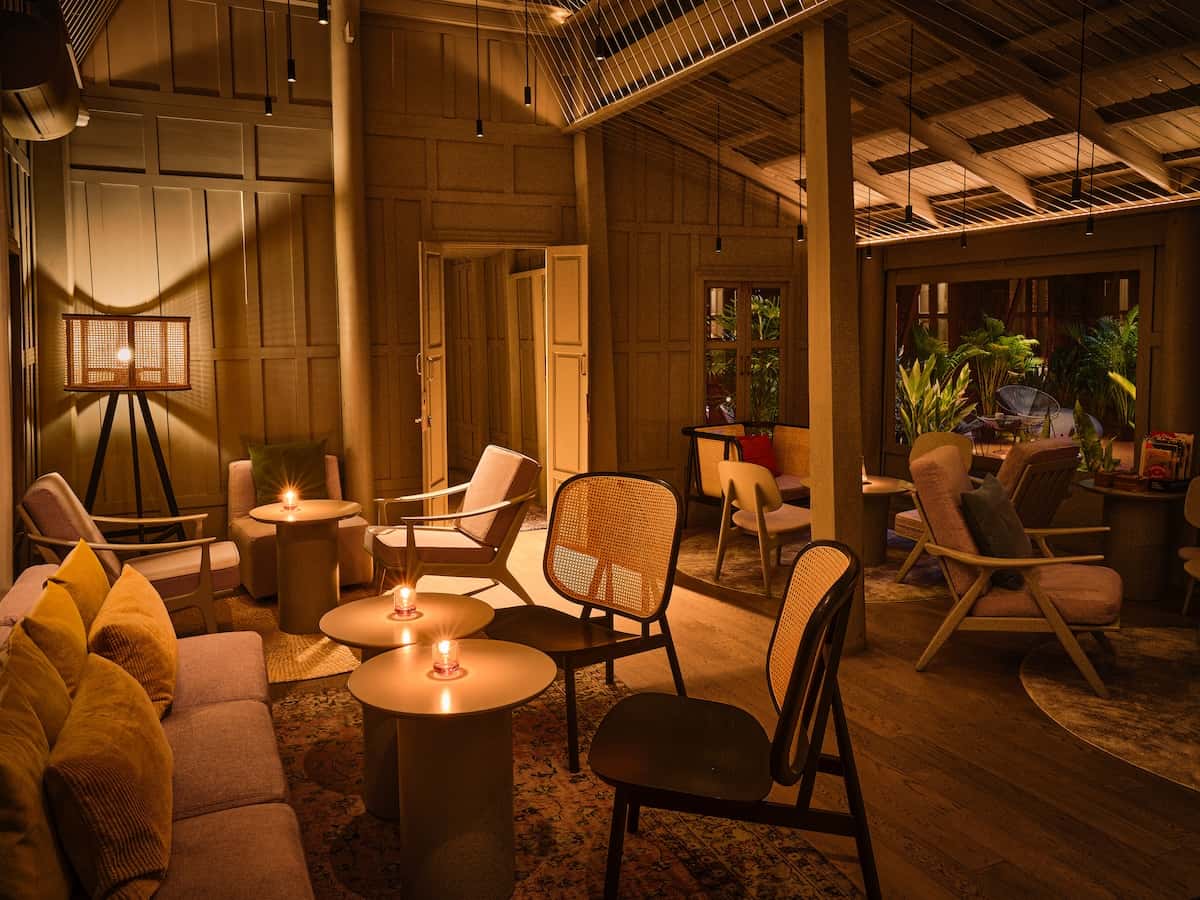
Orchestrating Every Element With Artfulness
For all her forthrightness, Garima orchestrates every element with artfulness; in the Claymen ceramics by Aman Khanna that cradle her creations, and conceptually in her ‘chaat’ dish, where a suspended disk hovers above the ingredients like an Anish Kapoor sculpture defying gravity — a visual tension mirroring the balanced intensity of flavors beneath. “Everything’s intentional,” she smiles impishly. “The dishes, which are a vehicle for the food, the plateware that it comes on, all of it.”
The playful Claymen ceramics are a good example, she agrees. Each has a different face, “inspired by the faces you see on the streets of India, because that course is about the street food of India. And this playful take on our environment makes cooking even more fun.”
It’s not always the concept that comes first, though, she elaborates. “Sometimes we see something beautiful, and we incorporate it in the restaurant. Sometimes we go out looking for it. But the process is always underpinned by the same idea: creating moments that go beyond the food.”
Since Opening In 2017 The Accolades Have Piled Up
Since 2017, thanks to the food and those moments, the accolades have piled up: The first Indian woman to win a MICHELIN star. Highest new entry on Asia’s 50 Best recipients in 2018. Asia’s Best Female Chef in 2019. Judge of Masterchef India. Founder of Food Forward India. First female Indian recipient of two MICHELIN stars. Becoming a standard bearer for modern Indian cuisine along the way.
“You can chase accolades or enjoy your craft and work at improving it and providing your guests with a unique experience,” Garima contends. She’s managed the tricky balancing act of achieving both. “And you can do both, to be honest,” she adds. “But you have to decide why you are in this profession in the first place.”
In Bangkok right now, it’s often the hardworking, homespun restaurants – with little PR and marketing – that are full every night. “And full every single night for months to come!” Garima agrees. “And they’ve not won any accolades other than garnering the most desirable accolade of all: their guests’ love for them.”

“Gender doesn’t make a chef. It’s your skill that makes you a chef.”
Rather than an effective act of PR, Restaurant Gaa’s growing list of accolades reflect and don’t drive the adoration Garima has built among her guests. “You know, when you’re young, you take more risks, and I’m glad I took those risks,” she smiles sagely. “Maybe today, I might not have started Restaurant Gaa the way I did back then. But I’m very happy with the direction my life has taken so far, and I’m excited to see what comes next…”
Those risks paid off precisely because Garima refused to be defined by others’ expectations or confined to convenient boxes. This resistance to categorization surfaces again as we turn to the gendered language that often shadows her achievements.
“What is the difference between a woman chef and a male chef? Like, is women’s food different from men’s food?” Garima Arora shakes her head. It’s a challenge to all the titles the culinary world has bestowed upon her. “Gender doesn’t make a chef. It’s your skill that makes you a chef. You put in the hard work. And that’s what shows at the end of it.”
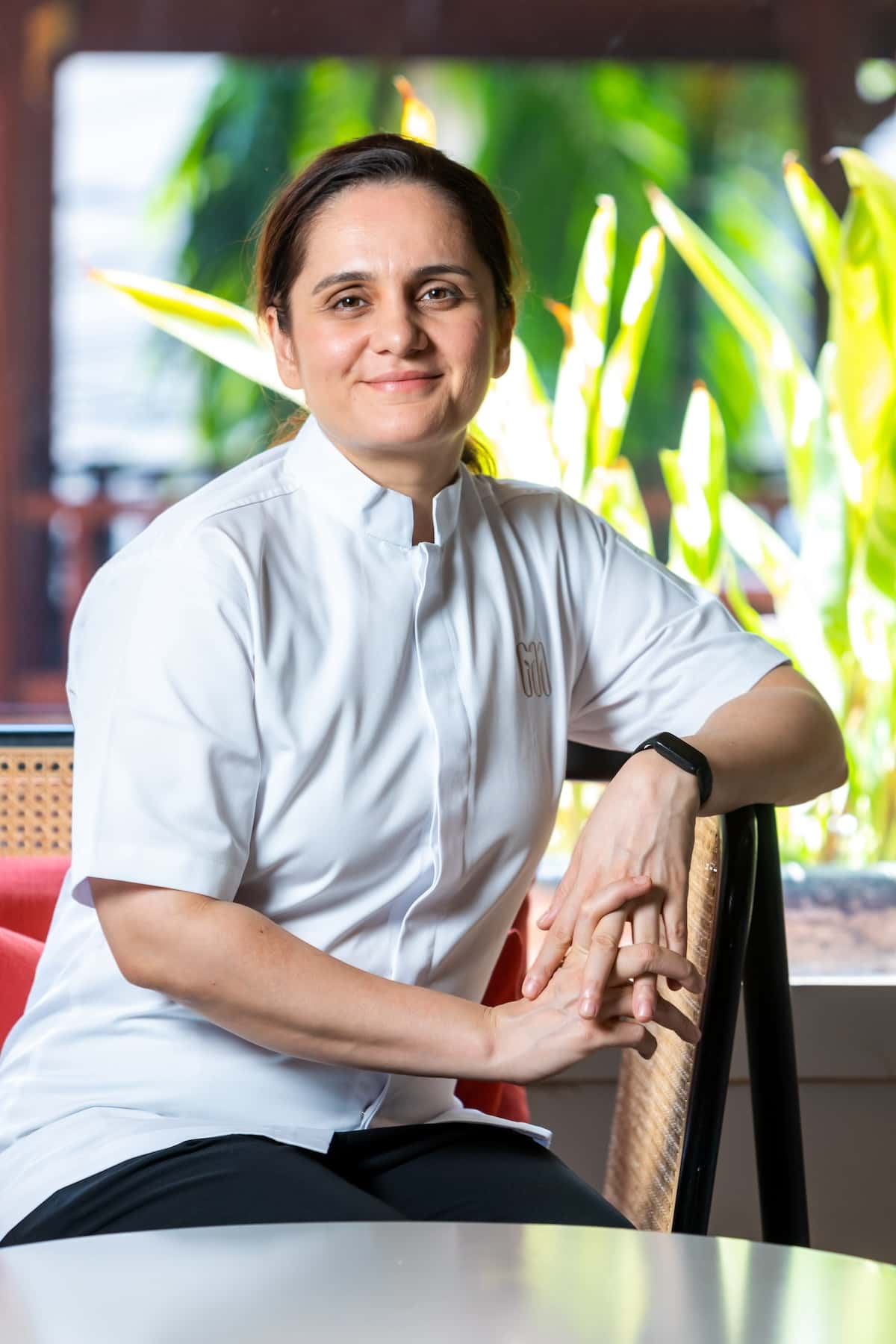
As Authentic And Intentional As Ever
Her exasperation with gendered culinary distinctions is clear. But there’s nuance to her perspective. When we visited Restaurant Gaa, Garima was on maternity leave having her second child — another dimension of her identity that the industry might view as either limitation or curiosity. Or another opportunity to pigeonhole. “I mean, it is a tricky balance,” she admits. “I can start at 9am and finish at 12am, if I don’t put boundaries in place. As a woman, it’s just not the job that you do. It’s all the other responsibilities that you have, plus the job that you do, that kind of become your identity.”
So, it’s this complex navigation of multiple identities — chef, woman, mother, mentor — and sometimes the forthright rejection of them all that informs how Garima guides the next generation. “With experience and having spent time in a position where I have younger female chefs around me, younger female chefs back home in India whom I’ve met over the past couple of years, I understand that the titles comes with a certain degree of reverence for the responsibility,” she says about becoming a role model to young chefs searching for their own path through the culinary maze.
Her counsel distills everything she’s learned about transcending labels and limitations: “My advice — whether it’s for a young male or female chef — is always the same: there are no ceilings, and you shouldn’t limit yourself to other people’s opinions.”
As authentic and intentional as ever.









 Wink Hotels' is a new kind of Vietnamese hotel made for the modern traveler and ready to take on the world.
Wink Hotels' is a new kind of Vietnamese hotel made for the modern traveler and ready to take on the world.